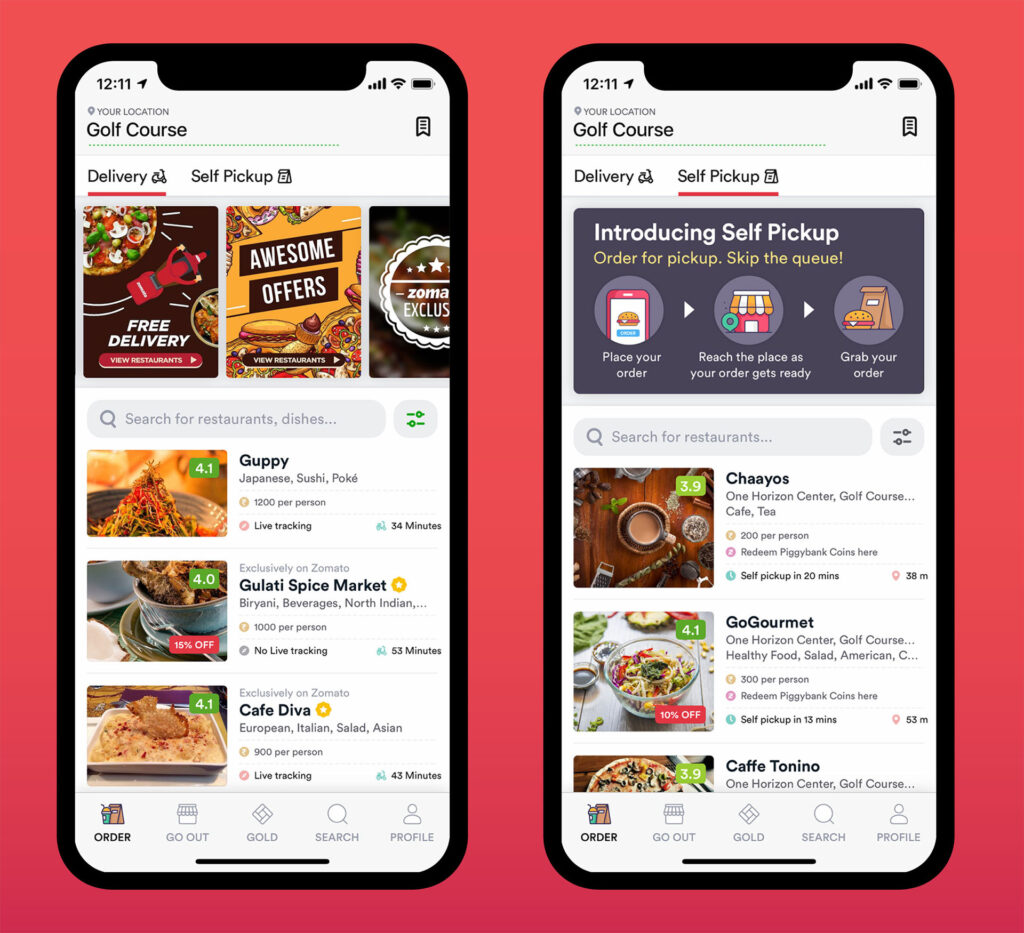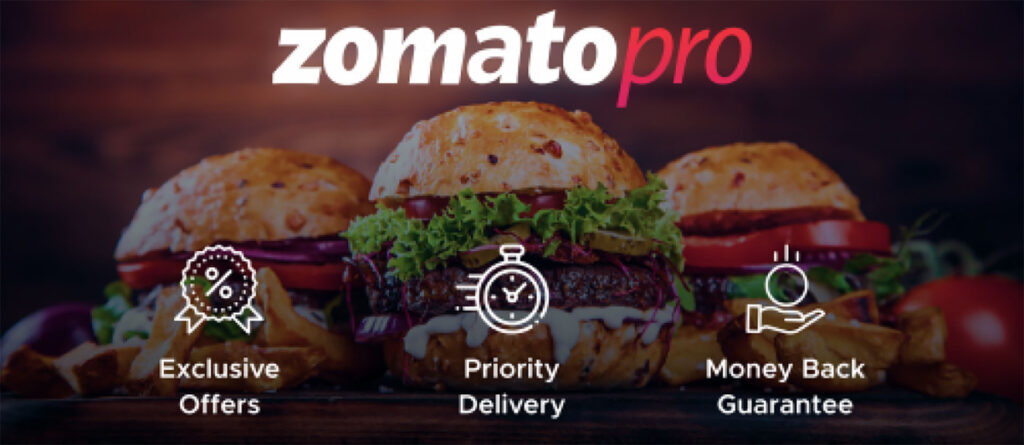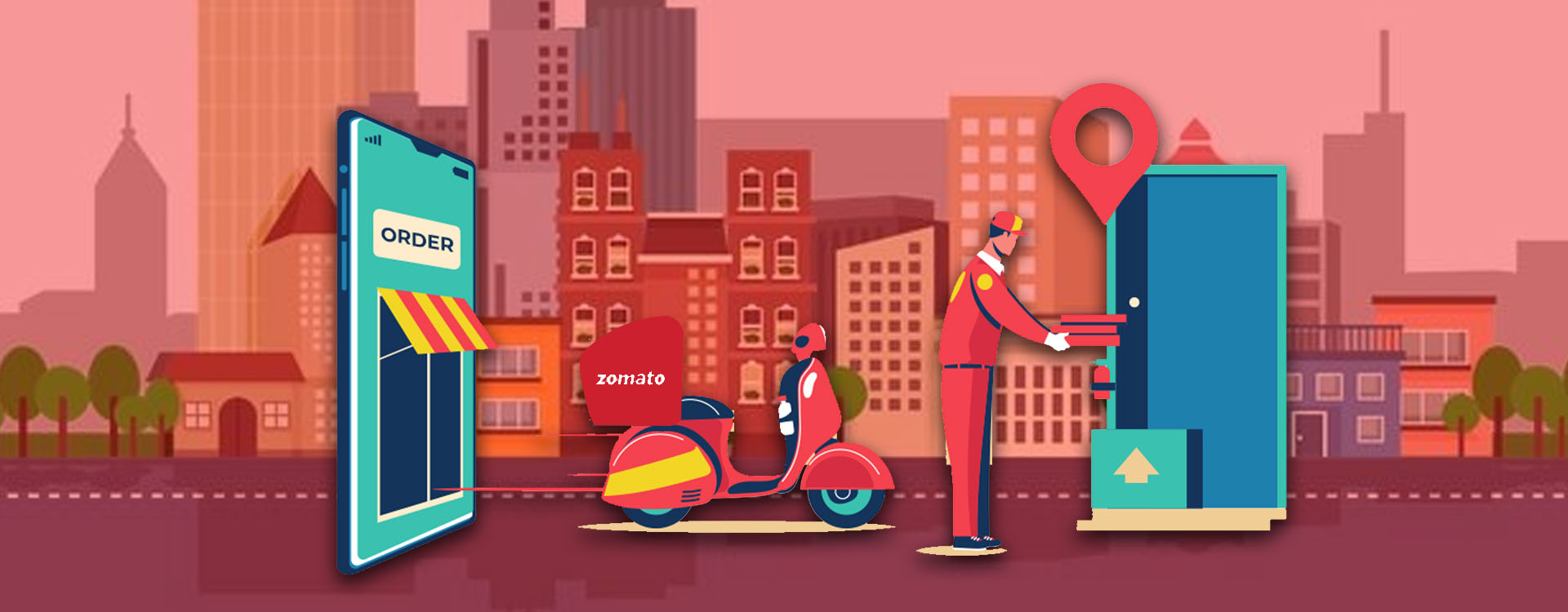Remember the days of hunting down the perfect restaurant for a night out with the family? We all know the struggle of looking up which restaurant is close enough to beat the traffic, calling up each one of them to find out about dinner reservations, directions, corrections. Then struggling to find the menu so you can figure out the food choices and prices according to your budget. Well, those days are long gone with the genesis of the online restaurant aggregator, Zomato.
What is Zomato and How Does it Work?
Nowadays we know Zomato as one of Indian’s most popular online food delivery start-ups. It is one of the largest digital platforms for all things restaurant and food-related, but this was not always the case. In its infancy, Zomato was just a simple online portal that acted as a catalogue of menu cards from various restaurants and was launched under the name ‘Foodiebay’.
The founders, Deepinder Goyal and Pankaj Chaddah, launched Foodiebay in an attempt to make restaurant-goers’ lives easier by cutting away the long queues people had to wait in. Sometimes, it was just to take a glance at the menu to decide if they wanted to or could afford to eat there. The solution of cataloguing and giving potential customers easy access to the restaurant’s food items proved a massive time-saver, which greatly improved the traffic to their website. This led to a rapid expansion of the brand and the online platform and thus, Zomato was born.
Now, in the present context, when most of us think of Zomato on the surface, we think of the food delivery app, which is akin to the likes of Swiggy that gets food to you from the restaurant. However, food delivery is not the core of this start-up. Primarily, Zomato is a restaurant aggregator, and its main product or wing is the website that acts as a convergence point where users can find everything they need to know about a restaurant when they go on the hunt for a night out. Menu pricings, offers, table bookings, branch locations and even customer reviews can be found on its online portal.
The core goal of this brand is to give customers a holistic overview of the eateries that they are going to spend their well-earned money in. It is a one-stop-shop if you will. Having said that, Zomato does also have food delivery options that are provided from the restaurants that they partner with and is facilitated through the streamlined ‘Zomato Food Delivery’ app.
Since its inception in 2008, the brand and the platform as a whole have seen tremendous growth and is currently present in 24 countries and more than 10,000 cities globally. It officially became an entrant into the unicorn club in February of 2018 when it raised $200 Million in funding which brought the brand valuation up to $1.1 Billion. In the span of just three years the brand valuation has shot up through the roof and as of 2021 it was valued at $ 5.4 Billion.
The surge in its growth was due in part to the core platform function of aggregating restaurants on its website as well as the diversification into the online food delivery space in 2015 with the mobile app.
‘‘
Zomato has a distinct advantage wherein it has grown with the changing market, thus adopting an innovative approach to penetrating the industry over time.

Zomato’s Platforms and Initiatives: The Reasons Behind Its Success
The Website
As mentioned before, this was Zomato’s first and core iteration as it ventured into the online food industry. The website portal is an online restaurant directory/listing platform that connects users with all the restaurants in their city or immediate vicinity and cuts the information intake time in half. The site gives people a wide variety of information about what kind of restaurants there are, the food choices, menu pricing, and relative locations. It also acts as a booking platform through which customers can easily book a table well in advance with partnered restaurants.
The site also helps filter out restaurants as per different preferential categories like price point, style of cuisine, customer ratings, dietary needs and hygiene factors. The website as a product or mechanism for the brand is a two-pronged strategy from an entrepreneurial and business standpoint. The plan starts with streamlining the user experience, which drives heavy traffic for the brand and enables it to spread its reach. Simultaneously, as a result of this heavy traffic, the website is the perfect platform for hosting advertorials and offers that restaurants wish to reach their customers with. Zomato uses this to their advantage by featuring ads for restaurants and charges them a commission for it. This brings a lot of visibility for the restaurants in question and revenue for Zomato. It is a win-win strategy and that is why the website is at the core of the brand’s market penetration, acting as a cornerstone for all its other branch-off ventures.
Zomato Food Delivery App
The App, which was launched in January of 2011, served as a strong supporting wing to the business and is second only to the primary website. The basic function of it is similar to Swiggy. It takes food orders from customers on behalf of its partner restaurants and delivers to them via its own fleet of Zomato delivery personnel. Though the fleet is relatively new following the success that newcomer Swiggy had seen using its own fleet instead of using third-party delivery services which Zomato was initially doing.
The app offers a variety of different features that streamline the user experience and has many similar features to the website. Centred around convenience, the app allows customers to order food online from partner restaurants in over 500 cities across India. Additionally, you can also track your order’s status in real-time, avail offers and discounts that a particular restaurant has, book tables, look up restaurant details (reviews, photos, ratings, menus, etc.) and filter your restaurant search with the filter option on the app which mirrors the website.
Interestingly, where apps like Swiggy just get the food to you, Zomato has an added option of letting customers place orders, which they can then go pick up for the full takeaway tradition.
The features of the app aside, it was a smart business branch-off that contributes to the business’s revenue stream. By bridging the gap in the online food ordering industry that exists in India, the brand brings convenience and efficiency to the table, which drives up customer engagement and makes it such a popular platform. As a result of the rise in popularity, and the visibility and traffic these restaurants get from the delivery app, Zomato can charge a delivery fee, which is split between the company and the drivers.
Zomato Gold
This wing of Zomato’s revenue-building scheme is a subscription platform where users and customers can access exclusive deals at restaurants and pubs that are under the Zomato banner. In this, there are two broad categories, one for nightlife and one for dine-out customers. In the dining, segment members receive complimentary dishes from the menus of partnered restaurants and get deep discounts. In the nightlife segment, customers get complimentary drinks from the menus.
The gold membership platform acts as a heavy revenue generator as well as a loyalty-building scheme. The deep discounts and complimentary menu items ensure higher user loyalty for the platform, more footfall for partnered restaurants. Consequently, the subscription fee paid by users and the registration fees that restaurants pay to Zomato to be featured pulls in a steady stream of revenue and brand popularity for the platform.
All in all, the multi-pronged approach of streamlining the user experience and cross-promoting partnered restaurants have served Zomato well in becoming not only a viable business model but one of India’s most popular and fastest-growing start-ups to date. More than just being a series of apps and online portals, Zomato has turned its product line into a symbiotic business builder and the foundation upon which it stands today.
With the apps and platforms doing the heavy lifting in building up the brand value and driving customer engagement, Zomato also has a series of initiatives that further bolster the venture of this rapidly expanding start-up. Let us take a look at them and how they contribute to the overall growth.
Hyperpure
Where most of the previously illustrated initiatives were geared towards bringing customers and restaurants together, the Hyperpure venture is specifically designed for the restaurants that Zomato partners with. After all, they are their customers too in a way. Hyperpure is a B2B foodtech vertical that helps restaurants source fresh, hygienic and high-quality ingredients such as meat, produce, beverages, seafood items and so on.
It connects these restaurants directly with farmers, mills, producers and processors across the country to create an effective logistics network. This ensures that eateries can stock their kitchens with quality ingredients in a consistent fashion. It also serves the dual purpose of putting sources such as farmers and producers into business thus providing much-needed income. This approach not only diversifies Zomato’s value chain but also adds value to the brand name itself within the industry circles as a go-to brand to be partnered with, thus increasing the reach.
Zomaland
Counter-balancing the digital-forward presence of Zomato, Zomaland is the physical manifestation of the brand which acts as a food and entertainment carnival. The best eateries, musicians, comedians and games come together under the banner to display the vast connection and network that Zomato maintains in a single location.
Yes, people want convenience but as times like the 2020 lockdown have proven, people also want to have fun and celebrate in the real world. This venture takes the food connection and brings it into the real world, which creates a lot of clout for the brand and footfall for the restaurants that take part in it. Launched in 2018 as a flagship event it saw over 100,000 visitors in Delhi, Mumbai and Bengaluru alone. It has since been hosted in multiple cities and even been registered with the Singapore Tourism Board. Beyond being a fun event to build a brand name, it serves the purpose of widening Zomato’s business network. For a start-up that is a very valuable thing to have.
Zomato Kitchens
Zomato took things a step further and took to the start-up industry by providing kitchen infrastructure to entrepreneurs looking to open their own restaurants by funding them and setting them up in the right locations under the brand banner.
It is one thing to be a start-up, it is another thing entirely to help start-ups while your business is also in the start-up category (albeit a well-established one). This showcases the level of integration and vast network that Zomato has access to as well as the level to which the business scaled up. This venture essentially contributed towards building brand loyalty from the industry side.
All in all, it is quite evident that the reason for the overall success of Zomato is due to the wide array of products that line its market strategy and bolster its foundations. The combination of maintaining a strong core operation in the form of their website and having multiple apps and initiatives playing a crucial supportive role has ensured its place at the top of the mountain of start-up unicorns.

‘‘
Zomato's combination of a strong core business strategy and supportive initiatives pushed the brand to the forefront as an industry leader and inspires a great deal of brand loyalty.
To Sum Up
Zomato is somewhat of a veteran in the start-up online food delivery industry as it has been there prior to the likes of some of its biggest competitors like Swiggy. Now, while Swiggy does hold the lead in the delivery segment through the app as its core function, Zomato stands as a heavy-hitter in the restaurant directory and cataloguing arena. So, at the end of the day, yes, there is heavy competition, but it becomes less about who is the best and more about who offers the best service in a particular area.
Deepinder Goyal and Pankaj Chaddah started Zomato with the aim of cutting down the time spent lining up at restaurants by customers, and yet, has grown into an industry titan that inspires brand loyalty from both customers and partnered businesses. As a start-up, that is quite an achievement.
For more inspiring success stories, check out our Inspire Section.




